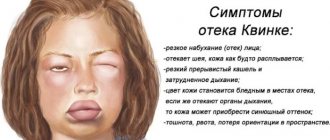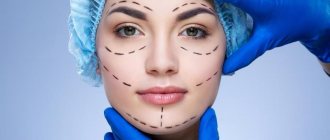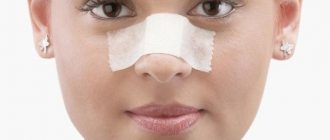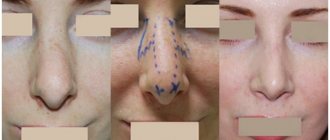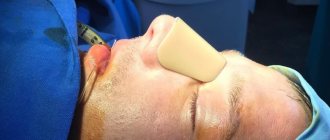When is rhinoplasty necessary?
Sometimes nature gives us gifts, which are completely unpredictable. Someone will be rewarded with huge eyes, and someone will be given a long nose, like a fairy-tale witch. And it’s good that technology in medicine does not stand still and you can change your “gift” at any time.
Correction goals:
- Aesthetic;
- Restorative.
Aesthetic ones are implemented in the following cases:
- Congenital anomalies of the nose.
- Acquired defects.
Restorative operations are carried out in the following cases:
- Curved septum.
- Nose injuries.
- Difficulty breathing.
Rhinoplasty is performed only after the final formation of bone and cartilage tissue, that is, at the age of over 16 years.
Contraindications
Many people mistakenly believe that closed surgery is very easy and therefore should have fewer contraindications than the traditional technique. But in fact, any surgical intervention is extremely stressful for the body.
Closed rhinoplasty is strictly prohibited if you have the following health problems:
- atrophic or allergic rhinitis;
- serious disruptions in the functioning of the endocrine system;
- oncological and autoimmune diseases;
- blood clotting disorder;
- exacerbation of existing chronic ailments;
- skin diseases with manifestations on the face;
- inflammatory processes in the nasal sinuses;
- untreated caries, the presence of decayed teeth;
- active viruses or infections;
- hypertension and diabetes mellitus 2-3 degrees.
For women, pregnancy and lactation are also absolute contraindications. The operation is not performed during menstruation and within two weeks after suffering from respiratory diseases.
Open rhinoplasty
In this type of operation, an incision is made along the fold of skin between the nostrils, capturing the wings of the nose where the junction with the lip passes. This type of operation is performed if closed rhinoplasty fails to achieve the desired effect. Thus, by lifting the skin to the bridge of the nose, you can gain access to the sections located inside and carry out corrections, constantly maintaining visual observation. Such an operation is necessary if the operation requires the most serious and deep interventions. For example, operations for a congenital defect, the so-called “cleft lip,” or the installation of transplants. Nowadays, many eminent surgeons recommend open rhinoplasty, since only this method can achieve the optimal result.
Comparison of types of plastic surgery
Patients who choose a certain type of rhinoplasty try to find a surgeon who can confidently perform the procedure. Generalist doctors who perform both types of rhinoplasty advise starting with a closed type of intervention. In difficult cases, it is advisable to immediately perform open manipulation. The difference in the types of impact is significant, which is better understood when considering the situation individually. Comparative characteristics of the main indicators of closed and open rhinoplasty are given in the table.
| Rhinoplasty | Open | Closed |
| Price (average minimum/maximum) | 100/400 thousand rubles. | 70/300 thousand rubles |
| Severity of scars after recovery | external, faintly noticeable | internal, not noticeable |
| Anesthesia | general | general or local |
| Saving the result | constant, errors are rare | permanent, insufficient correction possible |
| Complications | functional and aesthetic | functional and aesthetic |
| Rehabilitation | 2–3 – 6–12 months | 1–1.5 — 3–6 months |
| Postoperative swelling | pronounced | moderate |
| Operation duration | 30 minutes - 4 hours | 20 minutes - 2 hours |
| Requirements for the competence of a surgeon | high | average |
| Repeated intervention | rarely required | if necessary, performed in an open way |
| Accuracy of surgical control | high | low |
Closed rhinoplasty
The incisions in this type of rhinoplasty are made inside the nasal cavity, after which the tissue is separated from the “frame” of the nose, its bones and cartilage. After this, the surgeon performs the necessary manipulations. This type of rhinoplasty is painless, the postoperative suture is not visible, the arteries are not damaged, so the swelling is less pronounced. Most often, such operations are performed to correct the nose for aesthetic purposes. The operations are carried out in a hospital setting, they last no more than two hours, but in case of difficult recovery actions, the operation time can increase to 3 or more hours. Closed rhinoplasty is usually performed if a simple correction is required, without any major changes.
Postoperative period
Undoubtedly, the recovery period after closed rhinoplasty is somewhat easier. This is explained by the fact that gentle methods of influence are used; micro-tools allow you to treat tissues more delicately.
Soft tissues heal after any intervention in 1.5-2 weeks, but cartilage and bone tissue regenerate slowly and take their final shape only after 6-8 months. Only after this period of time can the result of rhinoplasty be fully assessed.
Read a detailed article about rhinoplasty here.
Preparing for surgery
Preparation for the operation begins with a consultation with the surgeon, where the patient’s wishes and the possibility of achieving the desired are clarified.
Then the preparation begins, it consists of the following:
- Conducting examinations by passing clinical and biochemical tests.
- Diagnostic measures for the study of the nasal sinuses, which reveal developmental defects and pathologies.
- Selection of the optimal nose model, agreement with the patient. Simulation is carried out on computer equipment.
- If the patient has chronic diseases, consultations with specialized specialists are necessary.
- Consultation with an anesthesiologist.
- Stop taking medications, in particular aspirin and drugs of its group.
- Cancel sedatives on the day of surgery.
Precautionary measures
After surgery, it is important to avoid stress and excessive physical activity, as such shocks can increase blood pressure.
Although traces of the intervention will not be visible, the need for anti-inflammatory therapy may be present. To prevent bleeding, it is advisable to replace glasses with lenses.
In the first days you can only drink in very small sips, no more than 2 liters per day. Hot and cold foods are temporarily excluded from the menu, and spicy foods and spices are not consumed.
Buyanov Sergey Yurievich (Expert Doctor):
It is necessary to avoid hypothermia, therefore, a runny nose. The development of inflammatory rhinitis will aggravate the swelling of the nasal mucosa and complicate or even block nasal breathing. For the same reason, it is not recommended to perform surgery on people prone to seasonal allergies during exacerbations.
Cosmetic procedures, such as peeling, are also prohibited. You should not use decorative cosmetics.
Carrying out the operation
After all the preparatory procedures and interviews, the operation itself begins on the appointed day. The patient must wash off the makeup, calm down, if a sedative is needed, then with the doctor’s permission, the nurse can provide such a medicine. There is no need to remain silent about the fact that there are allergic reactions to drugs and anesthesia. During the operation, the patient will sleep soundly thanks to the drip of anesthesia. The anesthesiologist closely monitors the state of blood pressure and pulse.
In the postoperative period, patients usually feel well. To avoid complications, certain procedures and medications are carried out:
- Tampons are inserted into the nose, making breathing difficult. Tampons are removed after a few days.
- Drops and solutions are prescribed for rinsing the nasal cavity after removing tampons.
- Within 3-5 days, the patient may be given antibiotic injections to prevent complications.
- A plaster bandage is applied to the nose, which fixes the osteochondral frame.
Full recovery occurs after 6-12 months. To ensure that this period does not bring complications, you need to follow all the doctor’s recommendations. During the postoperative period, it is not recommended to wear glasses or be in the hot sun. You are also prohibited from swimming in the pool and wearing heavy hats, helmets, and scarves. Particular attention must be paid to nutrition. You should not eat too hot food; you should also limit your intake of cold foods. After rhinoplasty, you are allowed to drink water only three hours after the operation, and fluid consumption should be two liters per day. It is not recommended to eat heavy foods; it is better to take foods that are easily absorbed in the body for ten days. Limit salt during this period and exclude the consumption of alcoholic beverages and coffee.
Complications
Like any surgery, closed rhinoplasty can have side effects and complications. The presence and degree of their severity depend both on the patient himself and on the qualifications of the doctor.
Complications and side effects:
- Hypoxia.
- Hyperthermia.
- Bleeding.
- Tears in the skin of the columella.
- Damage to the tear duct.
- Allergic reaction.
- Hematomas.
- Tearing.
- Severe swelling.
- Seams coming apart.
- Uncontrollable sneezing, headaches, aspiration with intranasal tampons, toxic shock, exacerbation of chronic sinusitis (as an inflammatory reaction to prolonged use of tampons).
- Pigmentation.
- Skin pustules as a result of improper application of plaster casts.
- Dacryocystitis is inflammation of the lacrimal duct.
- Soft tissue necrosis is rare.
- “Open roof” syndrome occurs as a result of overcorrection of the osteochondral hump.
- Careful selection of patients, having studied their anamnesis, anatomical features and tests.
- Use of hypotensive anesthesia.
- Detailed planning of the course of the operation, as well as the correct choice of surgical technique.
- Careful packing.
- Correct selection of tools.
- Use of broad-spectrum antibiotics.
Cost of rhinoplasty
Many people are concerned about the question of how much rhinoplasty costs in Moscow. Only a specialist can answer this, because he decides what type of rhinoplasty will be used, what volume of surgical work will be performed, and how the postoperative period will proceed. In addition, the cost of the operation includes:
- Payment for consultations of narrow specialists.
- Payment for anesthesiologist's services.
- Payment for laboratory tests.
- Providing the patient with comfortable conditions of stay in the clinic.
- Training of surgeons and staff.
- Payment for physiotherapy equipment and physiotherapist services.
At first glance, rhinoplasty in Moscow is not cheap. But if a patient is interested in a high-quality operation and the absence of complications, he will definitely give preference to a clinic that has proven itself on the positive side and has many grateful reviews from clients.
Efficiency
Performing rhinoplasty allows you to achieve:
- restoration of proper nasal breathing;
- attenuation of subordinate pathologies (otitis media, asthma, rhinosinusitis, snoring);
- aesthetic appeal of the nose;
- a complete change in facial perception.
There is often a coincidence of aesthetic and medical indications. Performing rhinoplasty becomes a solution to functional and psychological problems. The possibilities of the operation are discussed in advance. The doctor simulates the result and agrees on the details of the manipulation with the patient.
The cosmetologist is sure that plastic surgery is the only correct solution for a problem nose.
↑ What is the difference between these operations?
The main criterion for distinction is the type of surgical approach, which can be:
- Closed (endonasal) - incisions are made inside the patient's nasal passages. The visible skin remains untouched, and the specialist carries out all manipulations, as they say, “by touch.”
- Open – incisions are made both inside the nose and along the membrane between the nasal passages (columella). After this, the skin fold in the form of a triangle turns towards the bridge of the nose, and the surgeon is able to directly work with the bone and cartilage sections.
Each of these methods has its own advantages, disadvantages and features of use:
| Operation | pros | Minuses |
| Closed rhinoplasty |
|
|
| Open rhinoplasty |
|
|
| Appearance of the columella scar 6 months after open rhinoplasty: | |
↑ Which type of access is better?
The choice of the method of performing rhinoplasty - open or closed - always remains with the surgeon, who compares the task facing him with his capabilities and the anatomical characteristics of the patient. The key factors will be:
- The nature of nasal defects: some of them are almost impossible to eliminate without a full view of the surgical field (especially if the installation of implants or bone cutting is required).
- Surgeon's qualifications: in a closed manner, without direct visibility of the internal structures of the nose, usually more experienced specialists work.
- Features of past interventions or complexity of the defect. As a rule, revision rhinoplasty in the event of unsatisfactory primary correction or the development of internal complications is performed using an open approach. The same method is used when planning a large volume of intervention, for example, correcting asymmetry or eliminating deflection.
The overall impression of a person’s appearance often depends on the shape and proportions of the nose. That is why surgical interventions to correct it are so in demand and why they are considered one of the most difficult to perform.
Open and closed rhinoplasty are two main types of operations to correct aesthetic defects of the nose: long tip, hump, consequences of fractures, impaired nasal breathing, asymmetry, etc.
What are the pros and cons of each method? Which one is better? Will there be scars in each case and if so, where will they be located? TecRussia.ru looks into it together with the capital’s leading rhinosurgeons:
Main indications
Most often, a closed version of rhinoplasty is chosen to eliminate aesthetic defects when the patient is dissatisfied with the shape or size of his nose. It can be:
- excessive length, presence of a hump;
- thick, massive back;
- thickened, forked or drooping tip;
- large or insufficient size of the nostrils, their irregular or asymmetrical shape.
Indications for functional problems:
- narrow nasal passages;
- deviated septum;
- defects of the shell, nostrils;
- other structural anomalies, congenital or acquired after injury.
| Myth: Since surgical access with the closed method is carried out through the inner surface of the nostrils, the surgeon cannot solve a number of problems - for example, get to the hump or carry out correction using an implant. Roman Redin: Yes, any interventions in the area of the bridge of the nose have to be performed without the participation of vision. The limited size of the accesses somewhat complicates the installation of implants. But this does not mean that such problems cannot be solved endonasally - the specialist simply uses other techniques to control his actions, but he never works at random. Even without directly observing the surgical field, we can make all the necessary calculations: special surgical instruments help with this, which allow us to reach the problem area, perform tissue detachment, osteotomy manipulations, and at the same time not affect the surrounding structures of the nose. Closed rhinoplasty requires a specialist to have good knowledge of anatomy, understanding the individual characteristics of the patient’s appearance, as well as meticulous planning of the operation. With the appropriate skills and experience of a doctor, this method can eliminate almost any nasal defect. |


